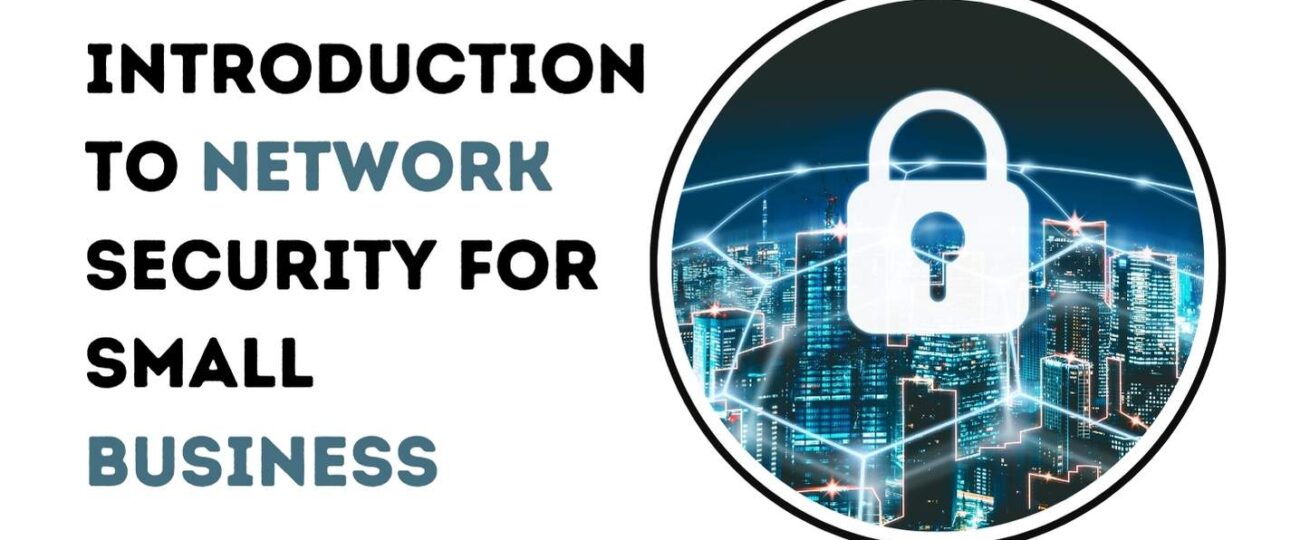Introduction to Network Security
In today’s interconnected world, network security is more crucial than ever—especially for small businesses. But what exactly is network security? In simple terms, it refers to the measures taken to protect your business’s digital data and network systems from unauthorized access, attacks, and breaches. While large corporations often make headlines for data breaches, small businesses are not immune. In fact, they are frequently targeted by cybercriminals because of their often-limited security measures.
Common Network Security Threats
Every day, new cyber threats emerge. From ransomware to phishing scams, the landscape is constantly evolving. Cyberattacks come in many forms, but some of the most common include:
- Malware: Malicious software designed to harm or exploit networks.
- Phishing: Scams that trick users into revealing sensitive information like passwords.
- Ransomware: A type of malware that locks a user’s files until a ransom is paid.
Cyberattacks have skyrocketed in recent years. According to a report by Cybersecurity Ventures, global cybercrime costs are expected to reach $10.5 trillion annually by 2025.
Understanding the Risks for Small Businesses
So, why are small businesses such appealing targets for cybercriminals? Unlike large companies, smaller organizations typically lack robust security infrastructure, making them easier to breach. Moreover, small business network often hold valuable data, such as customer payment information, that cybercriminals can exploit.

A sobering example comes from a small bakery in Ohio that suffered a breach, leading to the loss of customer data and a massive financial setback. This is a stark reminder that no business is too small to be attacked.
The Basics of Network Security
The first step toward securing your business’s network is to implement basic security measures:
- Firewall Implementation: A firewall acts as a barrier between your network and potential external threats. It’s one of the simplest and most effective ways to protect your data.
- Antivirus and Antimalware Solutions: These tools help detect, prevent, and remove malware and viruses from your network.
While these measures may seem elementary, they are the building blocks of a secure network.
Data Encryption and Its Role in Network Security
Data encryption is the process of converting information into code to prevent unauthorized access. It’s especially important for businesses that handle sensitive data, such as financial information or customer records.
When data is encrypted, even if a hacker gains access to it, they won’t be able to read or use it without the decryption key. This makes encryption a critical component of any network security strategy.
The Importance of Strong Password Policies
It’s no secret that weak passwords are a major vulnerability in network security. Establishing strong password policies within your organization is key to keeping your network safe. Encourage employees to create complex passwords that combine letters, numbers, and special characters.
Additionally, implementing multi-factor authentication (MFA) adds an extra layer of protection. With MFA, users are required to provide two or more verification methods before gaining access to sensitive information.
Network Monitoring and Intrusion Detection
Constantly monitoring your network is essential for detecting suspicious activity. Network monitoring tools can track data flow and user activity, identifying potential threats before they cause damage.
An Intrusion Detection System (IDS) is another valuable tool that alerts you to any unauthorized access attempts, allowing you to take immediate action.
Securing Your Wireless Network

Your Wi-Fi network can be a gateway for cybercriminals if not properly secured. Best practices for Wi-Fi security include:
- Changing default router passwords: Many businesses overlook this simple step, leaving their networks vulnerable.
- Using WPA3 encryption: This is the latest and most secure Wi-Fi encryption standard.
- Disabling guest access: Guest networks can be a weak point if not properly managed.
By following these best practices, you can significantly reduce the risk of a Wi-Fi-related breach.
Employee Training and Security Awareness
While firewalls and antivirus software are critical, the human element cannot be ignored. Human error is one of the leading causes of data breaches. Regularly training employees on network security best practices can prevent accidental breaches. This training should include how to recognize phishing emails, the importance of secure passwords, and what to do in the event of a suspected breach.
Backup and Disaster Recovery Plans
Even with the best security measures in place, it’s impossible to guarantee 100% protection against cyber threats. That’s why having a reliable backup and disaster recovery plan is essential. Regularly backing up your data ensures that, in the event of a breach or data loss, your business can quickly recover and continue operating.
The Role of Managed Security Services
If managing your network security seems overwhelming, you’re not alone. Many small businesses opt to outsource this responsibility to Managed Security Service Providers (MSSPs). MSSPs offer a range of services, from threat monitoring to firewall management, providing small businesses with peace of mind and allowing them to focus on their core operations.
Compliance with Security Regulations
Small businesses need to be aware of data privacy laws like GDPR and HIPAA. Compliance with these regulations is not only required by law but also helps build trust with customers by ensuring their data is handled responsibly.
Cost-effective Network Security Solutions
Budget constraints can make it challenging for small businesses to invest in top-tier security. However, affordable solutions do exist. Free or low-cost tools such as open-source firewalls, antivirus software, and password managers can provide effective protection without breaking the bank.
Emerging Trends in Network Security for Small Businesses
The future of network security is constantly evolving. Emerging technologies like artificial intelligence (AI) and machine learning are making it easier for small businesses to detect and prevent threats. Additionally, as more businesses move to cloud-based operations, understanding cloud security is becoming increasingly important.
Conclusion
Network security is no longer optional—it’s essential. By implementing basic security measures, regularly training employees, and staying informed about emerging threats, small businesses can significantly reduce their risk of a cyberattack. As Entrepreneur Playbook notes, “A small business’s greatest asset is its data. Protect it fiercely, because once it’s compromised, recovery may be impossible.”
FAQs
- What is network security for small businesses?
Network security refers to the measures taken to protect a business’s digital data and systems from unauthorized access, breaches, and cyberattacks. - Why are small businesses targeted by cybercriminals?
Small businesses are often targeted because they tend to have fewer security measures in place, making them easier to breach. - What are the basic tools for network security?
Key tools include firewalls, antivirus and antimalware software, encryption, and intrusion detection systems. - How often should small businesses back up their data?
Ideally, businesses should back up their data daily or at least weekly to ensure minimal loss in case of a breach. - Is outsourcing network security a good idea for small businesses?
Yes, outsourcing to Managed Security Service Providers (MSSPs) can be a cost-effective solution for businesses that lack the resources to manage security in-house.
See Also: High Performance Dedicated Server










